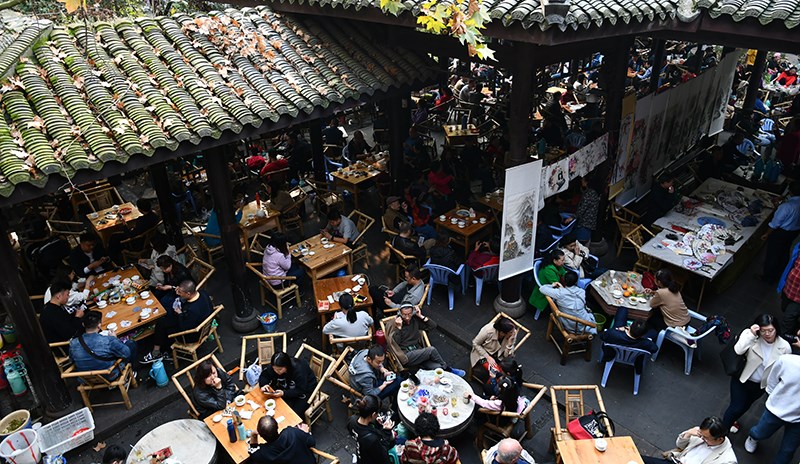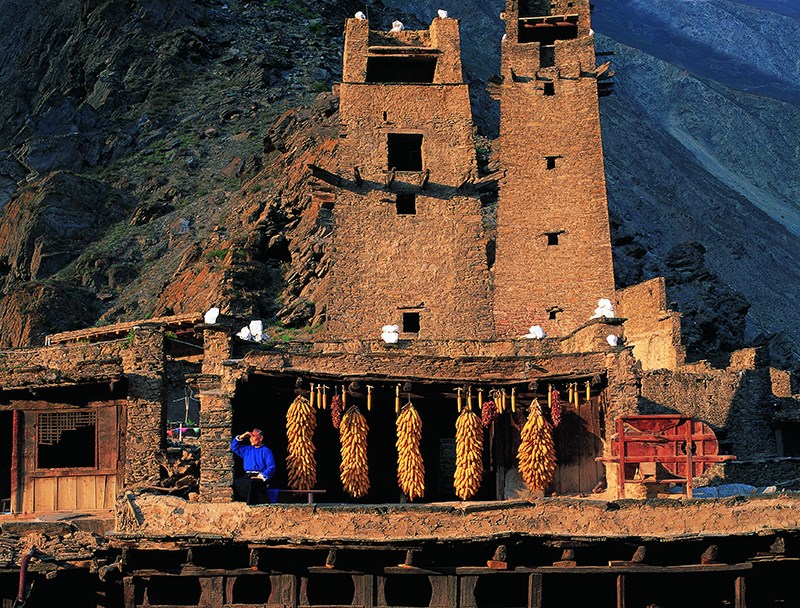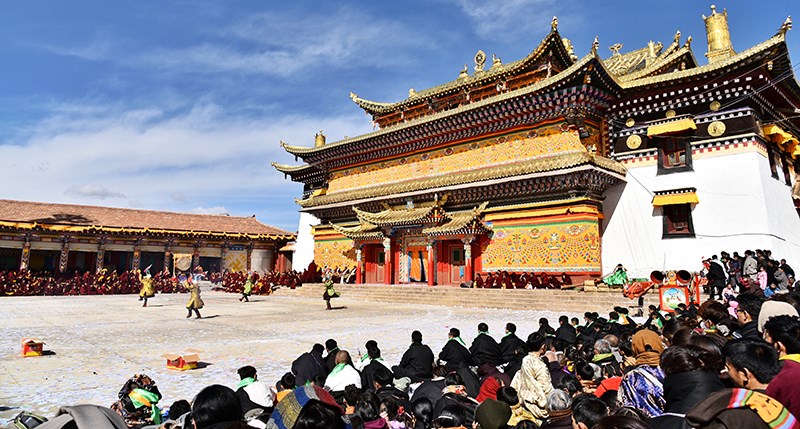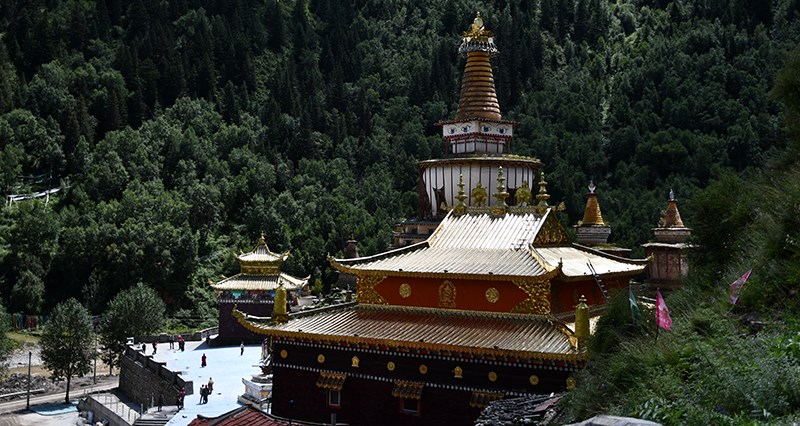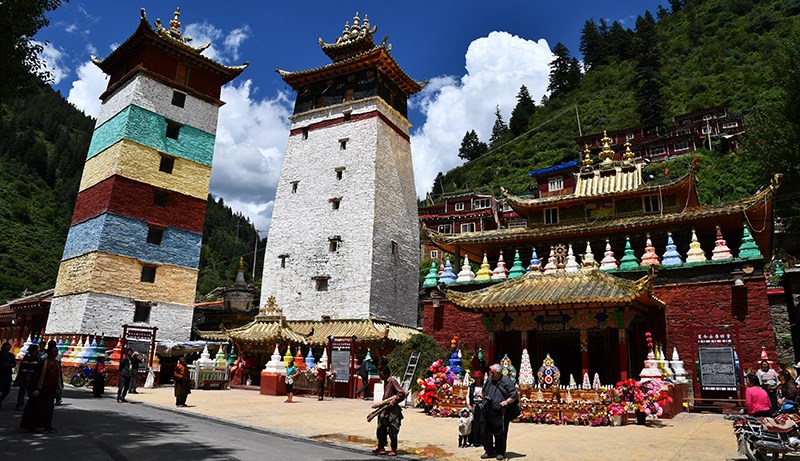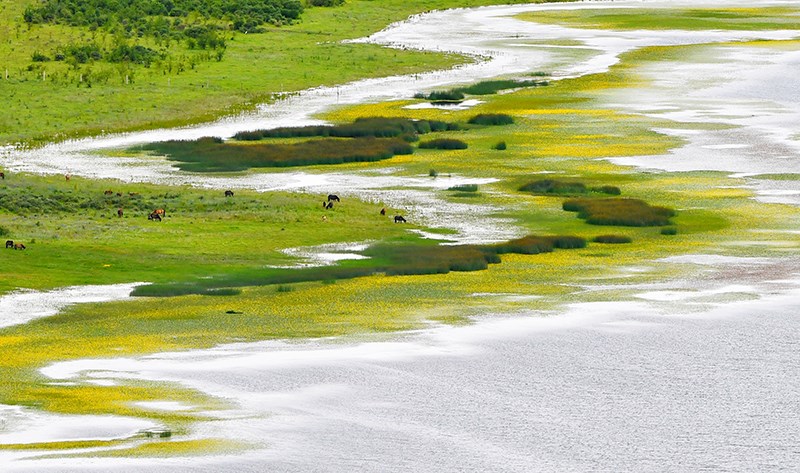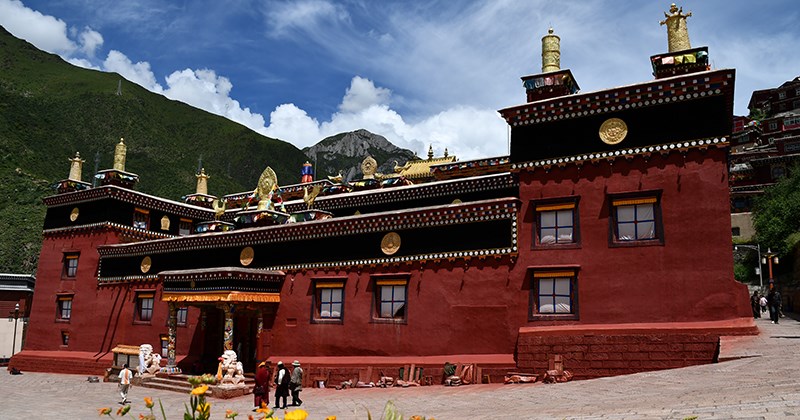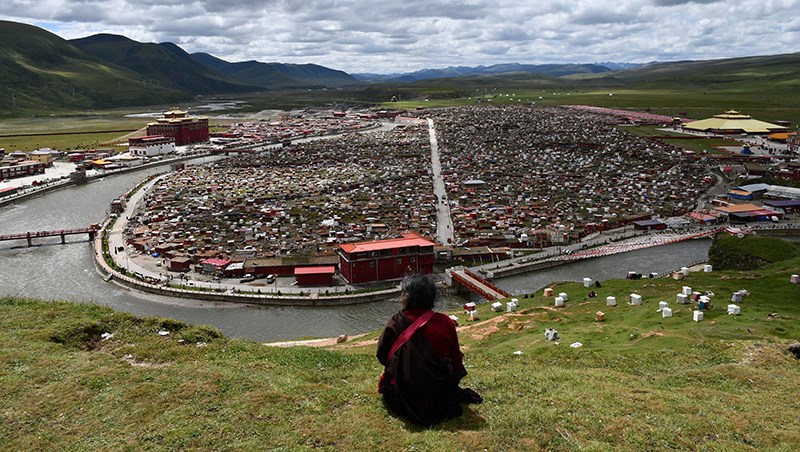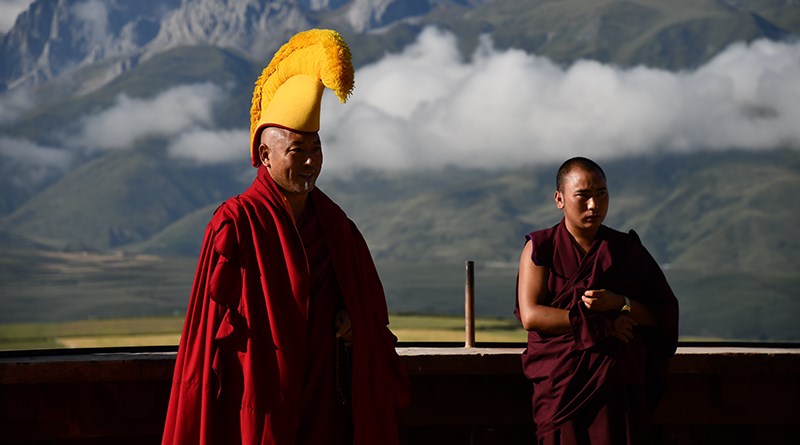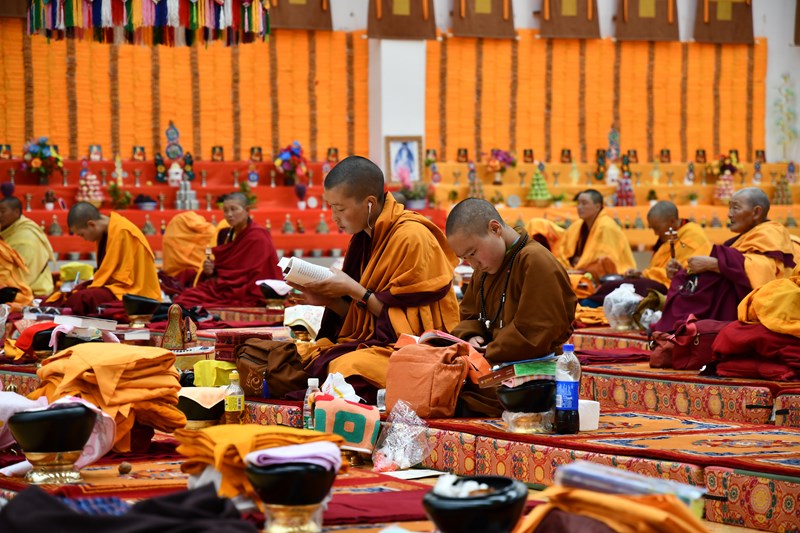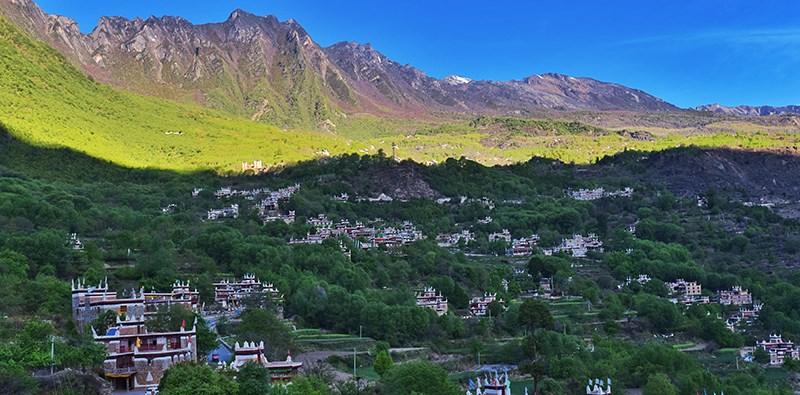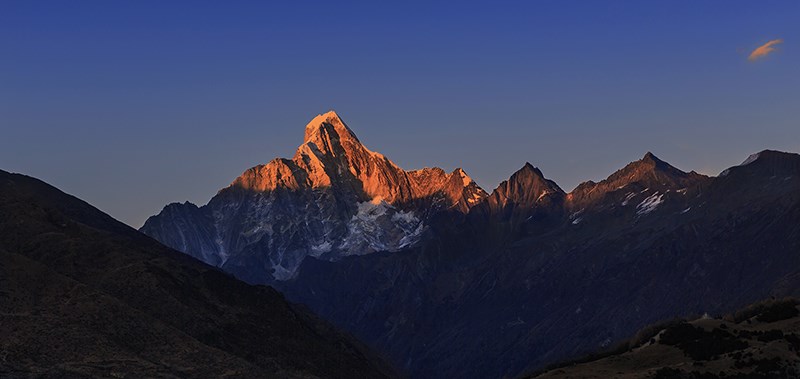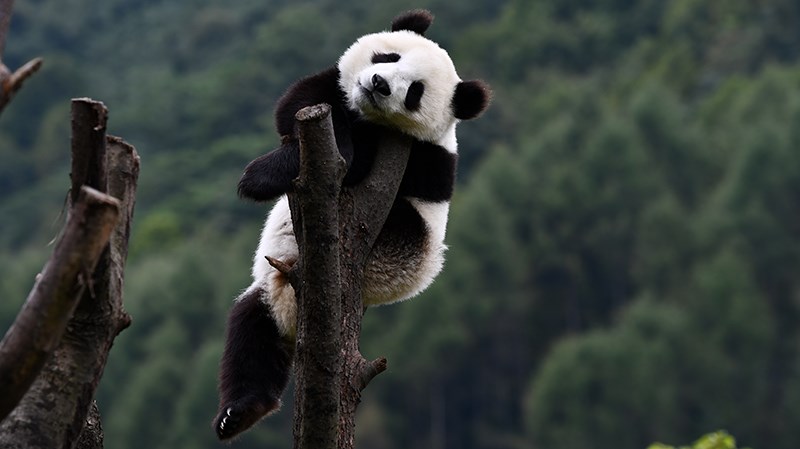13 Days Private Tour Chengdu – Taoping – Guer Gou – Aba – Rangtang – Luhuo - Garze - Yilhun Lhatso – Dege – Maisu - Pelyul - Yarchen Gar – Cuoka Monastery and Cuoka Lake - Xilong – Larima - Daofu - Tagong – Danba – Siguniang Shan – Wolong - Chengdu
The landscape of the Tibetan area Kham and Amdo is characterized by over 6000 m high mountain ranges, plateaus and deep gorges of mighty streams. Farmers and nomads live in the mountainous Kham. Monasteries with shiny gold roofs and castle-like houses with defensive towers, mani stones with colorful prayer flags fluttering in the wind and the unmistakable black yak hair tents are scattered across the expanse of wild plateaus where snow-covered peaks surmount. Flower-strewn alpine meadows, forests, crystal-clear rivers and lakes give the mighty scenery a soft appearance. White clouds float in the deep blue sky and submerge the landscape in soft shadows.
The Tibetan cultural areas are divided into three parts: Tibet Autonomous Region/ Xizang, Amdo in the northeast (large part of the provinces of Qinghai, south Gansu and northwest Sichuan) and Kham in the southeast (Chamdo Prefecture of Tibet, Yushu Prefecture of Qinghai, west Sichuan and northwest Yunnan). This discovery tour takes you through the Tibetan areas Amdo and Kham in western Sichuan which includes the Aba (Ngawa) Autonomous Prefecture of Tibetan and Qiang Minority and the Ganzi (Garze) Tibetan Autonomous Prefecture. This area is characterized by many green mountains and extensive pastures. Lush plants thrive here and numerous wild animals live here, many of which are rare specimens such as Panda, Snub-nosed Monkey and David Deer. There are also a number of medicinal plants and mineral resources. And the area is particularly rich in water resources. In this area you will feel different religious atmosphere from Tibet Autonomous Region (TAR), because both Nyingmapa Sect and Jonangpa Sect of Tibetan Buddhism dominate in this area.
On this trip we would like to recommend the hidden cultural and natural highlights in the Tibetan areas Amdo and Kham in western Sichuan: Aba, Rangtang, Ganzi, Dege, Baiyu, Yarchen Gar, Tagong, Danba, Siguniang Shan, Panda in Wolong...
Private travel, great experiences! Please contact us for your tailor-made travel offer.
With individual China Tibet travel, you can decide when, where and how you go on tour by yourself. What's more, you can choose the length of travel and whom you go with.
Hotel, program and itinerary are subjected to change with prior notice.
We must point out that you counter a basic tourism infrastructure in this region. Long journeys on bad roads and on high altitude and delays require good physical fitness, resilience and flexibility of the participants. Program and route changes due to unforeseen events are expressly reserved. If you desire the unknown and have an understanding of contingency, this is the right trip for you.
Monks in Aba | Photo by Liu Bin
Bon Monastery of Nangshig | Photo by Liu Bin
Aba Nunnery | Photo by Liu Bin
Bangtuo Monastery | Photo by Liu Bin
Sirin Kar Monastery | Photo by Liu Bin
Han Chinese Monastery | Photo by Liu Bin
Ganzi Monastery | Photo by Liu Bin
Debate in Ganzi Monastery | Photo by Liu Bin
Ganzi Monastery | Photo by Liu Bin
Dargye Monastery | Photo by Liu Bin
Dargye Monastery | Photo by Liu Bin
Keluodong Rock Sculpture Frescoes | Photo by Liu Bin
Dege Printing House | Photo by Liu Bin
Dege Printing House | Photo by Liu Bin
Dege Printing House | Photo by Liu Bin
Dege Printing House | Photo by Liu Bin
Dege Printing House | Photo by Liu Bin
Dege Printing House | Photo by Liu Bin
Dege Printing House | Photo by Dr. Ningmei Chen
Perlyul Monastery | Photo by Liu Bin
Yarchen Gar | Photo by Liu Bin
Yarchen Gar | Photo by Liu Bin
Prayer Wheels of Tagong Monastery | Photo by Liu Bin
Tagong Monastery | Photo by Liu Bin
Tagong Monastery | Photo by Liu Bin
Sunset of Yala Mountain | Photo by Liu Bin
Jiaju Village in Danba | Photo by Liu Bin
Jiaju Village in Danba | Photo by Min Ke
Siguniang Shan | Photo by Liu Bin
Panda in Wolong | Photo by Liu Bin
